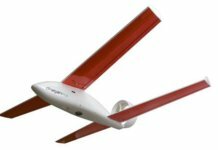In a newly released audit of the Federal Aviation Administration’s (FAA) unmanned aircraft system (UAS) waiver process, the Office of the Inspector General (OIG) has found room for improvement, particularly regarding timeliness in approving waivers.
The OIG conducted the performance audit between May 2017 and September 2018. Specifically, the OIG focused on the FAA’s methods of (1) approving waivers under its Part 107 rule for small drone operations and (2) conducting risk-based oversight of remote pilots with waivers.
In a summary of its findings, the OIG says the FAA has “established processes for reviewing and granting waivers but has experienced difficulties obtaining sufficient information, managing the volume of requests and communicating with applicants, particularly in explaining reasons for denying requests.”
“As a result, FAA’s Flight Standards office has disapproved 73 percent of operational waiver requests (e.g., over people and beyond line of sight), and a significant backlog of waiver requests to operate in airspace with manned aircraft exists,” the audit summary explains.
“Although the agency has improved its guidance and processes, FAA may continue to experience difficulty with review timeliness and responsiveness, given the growing demand for UAS operations, which could increase the risk that operators may continue to bypass established processes and operate without agency approval,” it says.
The OIG then delves into the FAA’s “risk-based oversight system,” which is still in its “early stages”:
“While FAA has developed guidance for planning annual inspections, few UAS operators have received inspections to verify their compliance with regulations and the terms of their waivers,” the OIG says. “Moreover, the agency’s ability to perform meaningful risk-based surveillance is hindered by limited access to detailed UAS operator, FAA inspection and risk data. As a result, FAA does not have assurance of operators’ compliance with regulations, is not well-positioned to develop an oversight strategy, and is missing opportunities to gather information that will help shape rulemaking and policies.”
In turn, the audit lists eight recommendations for the FAA:
- Assess the workforce tasked with reviewing waiver and authorization requests to determine if Air Traffic Organization (ATO) staffing is adequate, and take appropriate action as needed.
- Assess the performance of the ATO’s non-automated airspace waiver request process to determine if volume and timeliness goals would improve the process, and if so, implement these goals.
- Implement performance metrics for the Low Altitude Authorization and Notification Capability (LAANC) to evaluate its effect on application processing volume and timeliness, and take appropriate action as needed.
- Create internal controls to improve consistency in standard template responses used to correspond with applicants regarding requests for information.
- Update National Flight Standards Work Program Guidelines to require field offices to perform inspections on a sample of commercial drone operators in their area for a two-year period (designed to increase available inspection data for creating a risk profile of UAS).
- Develop a baseline risk assessment profile of small commercial drone operators to inform inspector surveillance planning decisions, as well as procedures to periodically update this profile.
- Issue guidance to field offices on how to obtain FAA information on waiver- and/or authorization-holding UAS operators (designed to help inform their inspection planning).
- Provide clarifying guidance to UAS operators regarding the small UAS rule’s provision relating to operations over people.
The OIG says the FAA received a draft report of the audit on Sept. 10 and responded on Oct. 10. The FAA plans to complete Nos. 4 and 8 by Dec. 31, 2018; Nos. 2, 3 and 6 by Jan. 31, 2024; No. 1 by June 30, 2024; and No. 7 by Aug. 31, 2024.
The FAA concurs with all of the recommendations except No. 5, however:
“The agency did not agree with the need to conduct an additional two years’ worth of sample inspections to accumulate inspection data,” the OIG says. “However, it
did agree to implement new items for UAS oversight during fiscal year 2024 and
include these items in its National Work Program Guidelines by Aug. 31, 2024, which meets the intent of our recommendation. Therefore, we consider recommendation 5 resolved but open pending completion of planned actions.”
The full OIG audit can be found here.








